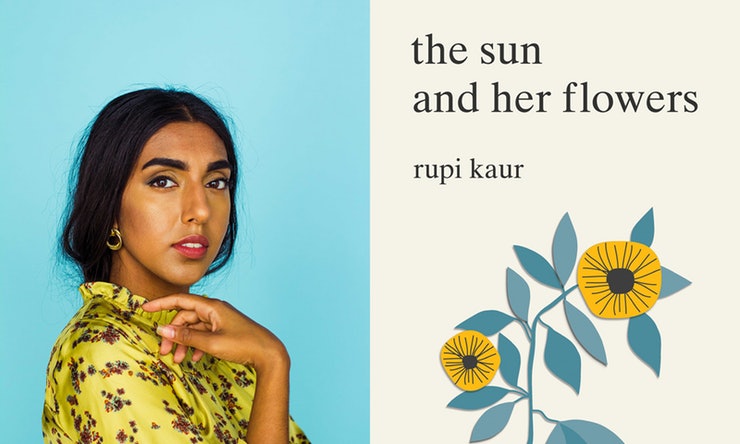By Emily Wunderlich
Rupi Kaur made her poetry debut with “Milk and Honey,” in 2015 and readers have been begging for more ever since. Their reward came Oct. 3 in 248 pages neatly bound in textured paperback.
“The Sun and Her Flowers” should not be treated as a sequel but rather as a companion. The two books complement each other in ways only Kaur could imagine.
In both books, she recounts her traumas from sexual assault, heartbreak and depression. She portrays herself as a survivor.
An important takeaway from Kaur’s poetry is that it is possible to fall in love again after a toxic relationship — with yourself and with someone another.
“Milk and Honey” is divided into four chapters that reflect themes universal to the human experience: “hurting,” “loving,” “breaking” and “healing.”
In “The Sun and Her Flowers,” Kaur’s focus shifts from surviving to thriving. This time, her work flows in five natural stages: wilting, falling, rooting, rising and blooming.
The title of her second installment captures Kaur’s reverence for the earth, and rightfully so. Her go-to metaphors usually allude to plants, weather and all that grows and changes in nature.
While Kaur still heavily relies on romantic love for inspiration, “The Sun and Her Flowers” also testifies the love that exists outside of the romantic sphere. Several of Kaur’s new poems exalt her mother and the sacrifices she made to give Kaur a happy childhood — a change of pace from “Milk and Honey’s” emphasis on conditional love.
Activism is a driving force in Kaur’s work. She challenges western beauty standards, reverses the cycle of self-hatred and empowers her audience to do the same. She also expands her feminism to global horizons, touching on female infanticide and her mother’s arranged marriage in the wake of her uncle’s passing.
In an era of political turbulence, Kaur’s perspective as an immigrant — a subject largely excluded from “Milk and Honey” — is nothing short of eye-opening. By celebrating her family’s foreign accent and cultural traditions, Kaur provides insight into the lives of immigrants everywhere.
Kaur’s writing is characterized by short stanzas, lowercase letters and lack of punctuation. According to her FAQ, she does this to retain elements of Punjabi, her native language, while also creating a sense of aesthetic symmetry.
Kaur’s poetry is accompanied with line drawings she illustrated herself, which allows readers to feel as if they’ve peeked into a journal, rather than a finished product. Incorporating visuals at the risk of distracting readers can be tricky, but Kaur achieves the perfect balance of minimalism and creativity.
In addition to writing her poems, Kaur delivers them orally. In 2016, she took the stage at a Tedx Talk to perform “home,” a poem from “The Sun and Her Flowers” describing her recovery from sexual violence. Oct. 2, she embarked on her North American tour to publicize the release of the book.
Rupi Kaur’s writing mirrors her evolution as an individual. Each of her works invites readers to join her journey of self-realization; while “Milk and Honey” promoted healing and spiritual wellness, “The Sun and Her Flowers” connects the outside world to the world within oneself.
Header photo courtesy of Nabil Shash



